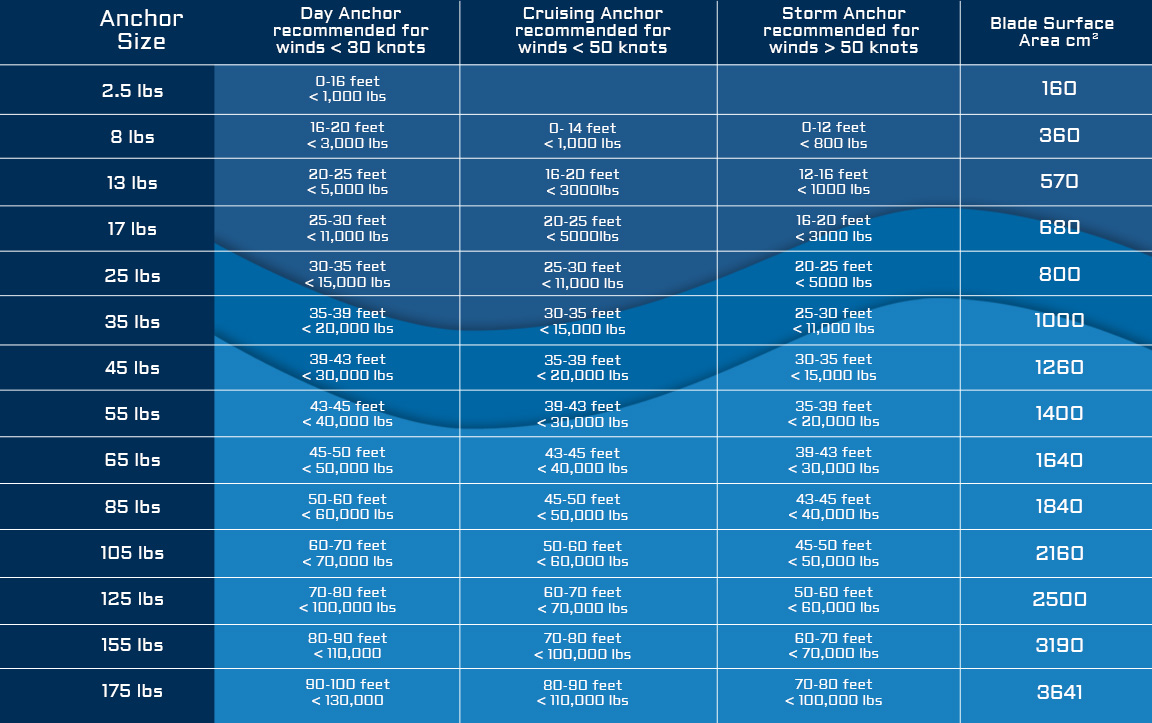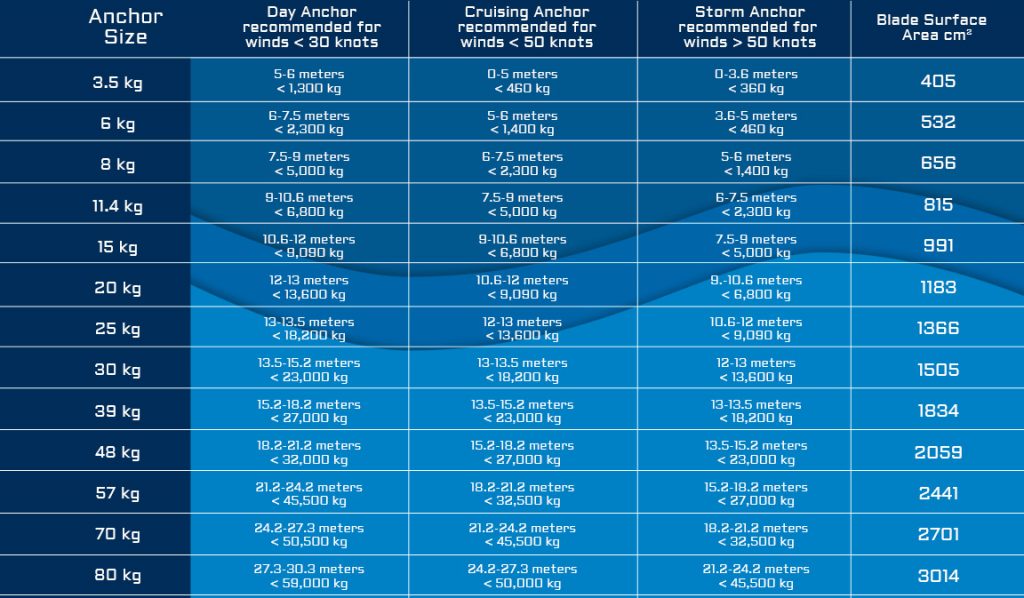When sizing an anchor or anchor rode, it’s useful to have starting point and to think of the whole system. This is a table developed by American Boat and Yacht Council (ABYC) to approximate the expected load on the anchor and the anchor rode for given wind speed and boat length. The complete table appears in Section H-40 of ABYC’s Standards and Technical Reports for Small Craft available at abycinc.org. The below table was created more than 50 years ago and it is not clear exactly how it was derived. After comparing this data in this table to work that has been done since we come to the conclusion that the values presented here represent loads expected on the anchor rode if anchored on chain only without the use of the snubbing system. And using a line rode or and adequately designed snubber you can reduce the loads by a factor of 3, by eliminating the shock loads. This is an argument for why its so important to use a snubber but when sizing anchor rode or your anchor, it is important to consider loads as stated in the table. The reason is that we can not rely on the integrity of a snubber in a storm. Should the snubber fail, the integrity of the rode should be sufficient to handle the loads without the snubber.
The ABYC Horizontal Working Load (lbs) Table
| Wind Speed (Knots) | Anchor Name | Boat Length – Feet | ||||||
|---|---|---|---|---|---|---|---|---|
| 20 | 25 | 30 | 35 | 40 | 50 | 60 | ||
| 15 | Lunch Hook | 90 | 125 | 175 | 225 | 300 | 400 | 500 |
| 30 | Working | 360 | 490 | 700 | 900 | 1200 | 1600 | 2000 |
| 42 | Storm | 500 | 720 | 1400 | 1800 | 2400 | 3200 | 4000 |
| 60 | Violent Storm | 980 | 1440 | 2800 | 3600 | 4800 | 6400 | 8000 |
How do you intend to use your boat? Do you sail only on calm days with fair weather (Lunch Hook) or are you outfitting for an adventure (Storm) where you might be exposed to hazardous weather at anchor? For example, if you are outfitting a 35 foot boat for you should size the working rode and anchor to safely handle loads up to 1,800lbs if planning a cruising adventure, but the same margin of safety is not necessary if operating day trips from the safety of a marina.
When making sizing recommendations we are generally referring to the needs of a cruising boat spending most of its time on anchor, in doing so we try to envelope high sustained winds (45 kts) and assume poor holding conditions (low viscosity bottoms). Some may think these recommendations to be too conservative especially when compared to sizing tables from other manufacturers. Companies often make claims of superior anchor efficiency, stating that their small anchor X will outperform a much heavier anchor from their competitors and often use sizing charts as a marketing tool to that end, recommending anchors and anchor systems that are dangerously undersized for their intended use. Comparing surface area can be a good judge for potential holding capability. Our anchor sizing recommendations are presented in the table below:


